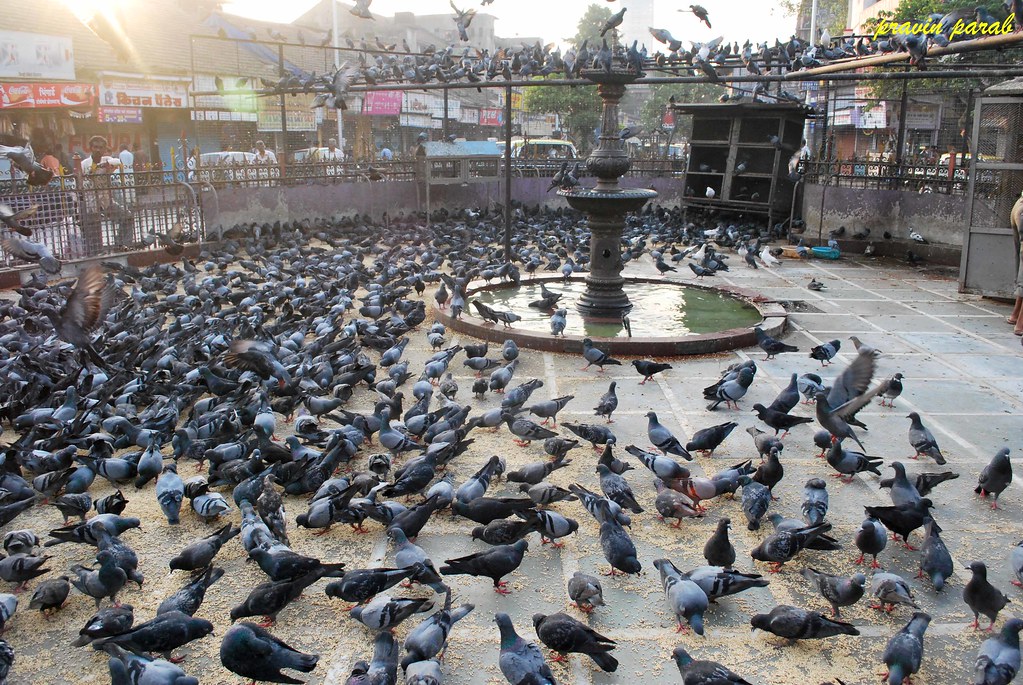In addition to other factors, our environment contributes a lot to allergies. We should be aware of what things can be controlled in our environment.
Pigeons:
There is a huge controversy regarding pigeons in metros. Pigeons are fed for religious purposes. this creates a lot of problems

- Pigeons clustering create a nuisance. The metro railway strictly instructs pigeons should not be fed near metro lines
- Their droppings and feathers can cause severe allergies, especially for asthmatic patients. The droppings on window ledges, etc can cause media for harboring fungi like aspergillus which themselves cause allergies. They are harmful for asthmatic patients
- Pigeons roost in skyscrapers and old buildings. They build nests on top AC units, window ledges, etc. Their nests are messy and unhygienic
- Pigeons harbour organisms which can cause chronic lung diseases
Tips to avoid pigeons:
- Install pigeon netting on windows and in balconies to restrict their entry
- Put barbed wire or glass shards to discourage pigeons from roosting in certain areas
- And first and foremost, discourage feeding of pigeons in residential and community areas.
Cockroaches:


Cockroaches are a huge menace for allergies.
- Cockroaches multiply quickly. They reside in crevices, in drains, in the kitchen, etc.
- Cockroaches love to hide in tight places. If a few cockroaches are visible outside, large numbers of them are hidden in your home.
- Cockroach dust, urine and feces are highly allergenic. Cockroaches spread a lot of diseases.
Tips to prevent cockroaches:
- Keep your kitchen and surroundings clean. Store groceries in properly closed containers.Spilled food and food particles attract cockroaches.
- Do a proper pest control.However cockroach allergens will be persistent for upto 6 months in the environment after that
- Get drains, etc cleaned regularly
Petrol and diesel fumes:
In the modern age it is difficult to escape from petrol and diesel fumes. They are highly irritant and aggravate existing allergies.To minimize this
- Do PUC and servicing of your vehicles regularly
- Car pooling and public transport reduce the incidence of petrol burning
Industrial and occupational pollutants:
- These vary from industry to industry. Cotton mills, textiles, etc cause chronic lung diseases due to fibres and fungus harboured on them
Cigarette Smoke:

- This is one of the most dangerous pollutant in our environment
- Smoking injures the delicate lining of the lungs and air passages
- Carbon particles and toxic chemicals get lodged inside our lungs
- Passive smoking is more harmful than active smoking. Your loved ones are suffering worse than you are !
Solution: Stop the habit!
Smoking is a major risk factor for early onset asthma and various lung diseases
Pollution inside your home:
Our homes are not spared from pollutants too:
- Deo spray: Reduce the use of room sprays and aerosols. They can trigger allergic attacks
- Insect repellant: Overnight plug ins and mosquito coils should be avoided, as the toxic fumes are released throughout the night. The insecticides are highly toxic and should be used with caution
- agarbattis: The smoke from incense sticks can cause trouble
- dust mites: They are discussed in detail in my previous blogs. Basic protective measures should be used to reduce them. https://nucareallergy.com/2018/07/19/dust-mites-tiny-but-troublesome
- Pets: Handling of pets should be minimized if you are allergic to them. Don’t allow them into the bedroom.https://nucareallergy.com/2018/08/31/should-fluffy-be-given-a-new-home-how-to-deal-with-pet-allergies
- Fungus or Molds: Proper measures should be taken place to minimize household fungi. https://nucareallergy.com/2018/08/26/latest-blog
Thus we can see that we are exposed to a variety of allergens in the security of our home!
Pollen allergy

Pollen allergy, or hay fever is more common in the warm spring and summer months
It is common in European countries during hay making time.
Due to Birch and pine tree pollen, it is fairly common in Canada and the united states
Due to warm climate following global warming, and longer summers the amount of pollen has increased in the air, increasing the incidence of hay fever
Information on pollen allergy are in my previous blogs.
https://nucareallergy.com/2018/07/26/am-i-allergic-to-pollen-in-the-city

